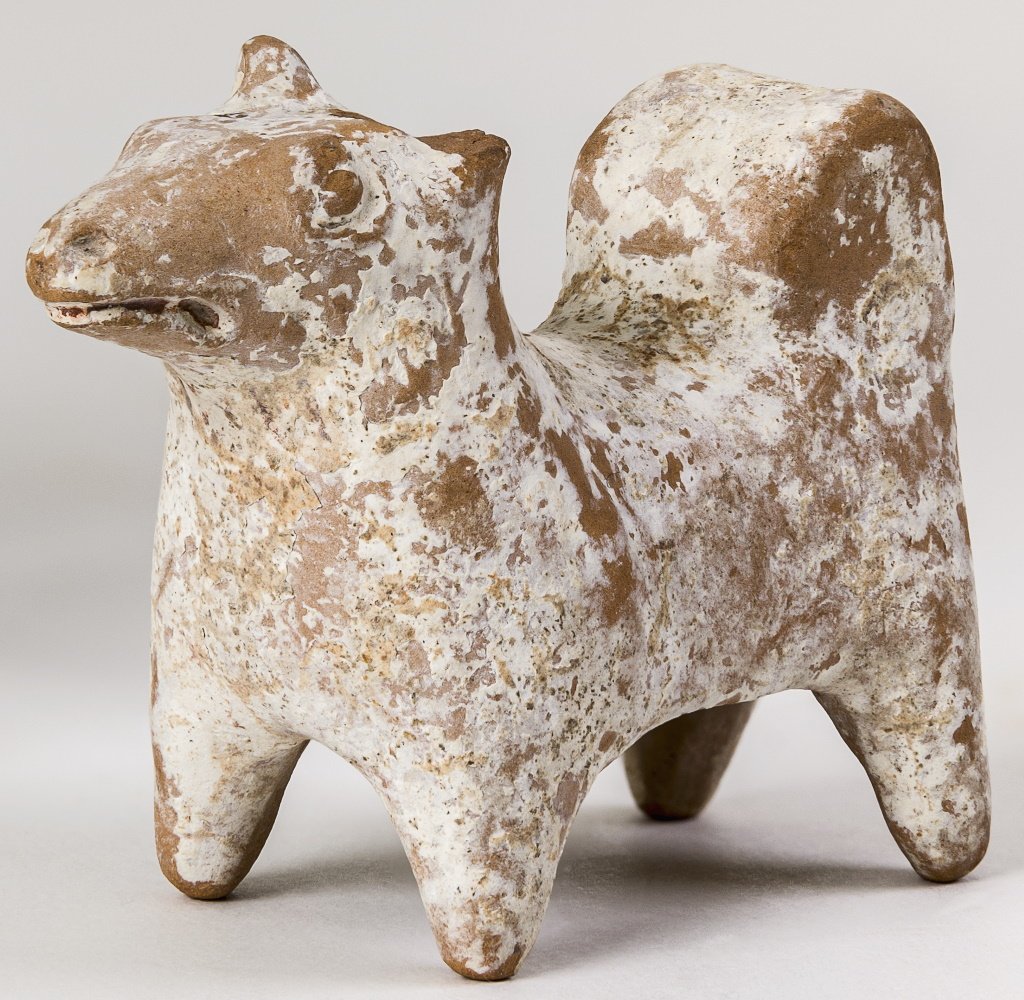The so-called Maltese or Maltese Spitz was a popular dog breed in Egypt as well as in the Greco-Roman Mediterranean region. However, contrary to what the breed's name suggests, its origin cannot easily be linked to the island of Malta. The name is derived from the Semitic word 'màlat' and means 'refuge' or 'harbour'. This word root can be found in many place names in the Mediterranean, such as the island of Melitaea (now Mljet) southeast of Corfu, or the island of Malta.
Because of their popularity as lapdogs, small-format statuettes of this dog breed may have been placed as 'knick-knacks' figures for decoration in homes, or they may have served as toys for children. (AVS)
Left ear broken off. Standing dog with coiled tail.
Former collection Erhart Kästner, Wolfenbüttel
en









